Although they’re more common with cats, dogs can suffer from the occasional hairball. They usually aren’t a big deal, but they can occasionally cause serious medical problems. So don’t ignore them!
We’ll explain which dogs are most likely to suffer from them and list some warning signs that should prompt a phone call to the vet. We’ll also explain a few of the ways you can help prevent them from happening in the first place.
Key Takeaways: Do Dogs Get Hairballs?
- Dogs can occasionally suffer from hairballs. Hairballs are usually no big deal, but you don’t want to completely ignore them — especially if they occur frequently.
- Dogs primarily get hairballs from self-grooming. However, they can also get them from licking other hair-covered items.
- If hairballs occur alongside other symptoms, you’ll want to consult your vet. This includes things like lethargy, constipation, or loss of appetite.
What Is a Hairball, Exactly?
Those who’ve never seen their dog cough up a hairball may be more than a bit startled upon seeing their first. Hairballs are – as the name implies – essentially clumps or balls of hair. But they don’t look like the tumbleweed-like clumps of hair that coat your couches and floors. Because they emerge from your pet’s digestive tract, hairballs are coated in saliva and other bodily fluids, which can make them look pretty gross.
Small bits of skin, food, or household debris are sometimes mixed in with the hairballs. They may even have a very faint green tint too. And they can also include hair from you or your other pets, especially if any of you happen to shed a lot of hair naturally.
Why Do Dogs Get Hairballs?
Dogs ingest hair all the time. They do so while chewing and grooming their bodies or licking the floor and other items covered with hair. But most hair passes through the digestive tract without ever being noticed by owners.
Hairballs occur when the clump of hair is unable to pass through your dog’s pipes, so they exit the same way they entered – via the mouth. Usually, dogs will cough, heave, and retch quite a bit while working the hairball out. It, at times, can be a little tough to watch.
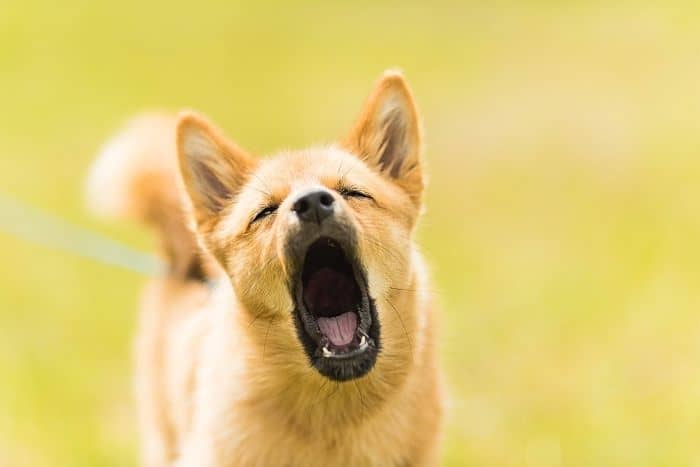
Hairballs: The Small, the Big, the Bad, and the Ugly
Standard-issue hairballs don’t usually cause any problems once they’re barfed up.
Your dog will likely just yawn and then go on her way. From this point forward, the only problem created by the hairball is the fact that you’ll have to clean it up.
But, hairballs aren’t always benign. Some can grow large enough to block a dog’s intestinal tract or esophagus. Your dog won’t be able to pass such hairballs (in either direction), which may prevent your dog from passing waste or swallowing food. It may even begin to ferment while it sits in your dog’s digestive tract, which may cause your dog to feel terrible.
You’ll need to take your pup to the vet in such scenarios for evaluation. Your vet may be able to administer fluids or prescribe medications that will help ease the hairball out, but removal is required in some cases.
What Types of Dogs Are Most Likely to Get Hairballs?
Most dogs can get hairballs, but some dogs are more susceptible to them than others. Generally speaking, dogs who fall into one of these three categories are the most likely to hack up hairballs on your floor.
Dogs with Medium to Long Hair
Chihuahuas, Great Danes, and other short-haired dogs can get hairballs, but they aren’t terribly common. Short hairs don’t clump as readily as long hairs do.
On the other hand, dogs with medium to long hair — border collies, poodles, and every breed in between — get hairballs more frequently.
Dogs Suffering from Fleas or Other Skin and Coat Problems
Whether it is caused by fleas, yeast, bacteria, or an allergic reaction, itchiness often causes dogs to lick or chew their skin and fur. Your dog will end up eating a bunch of hair while doing so.
Dogs Who Are Bored or Experiencing Emotional Problems
Dogs who are under-stimulated, stressed, or otherwise unhappy may lick or chew their skin and fur as a coping mechanism. This can cause a lot of hair to enter your dog’s digestive tract.
When Should You Worry?
As mentioned above, hairballs can occasionally cause relatively serious health problems that will require veterinary assistance to solve. One problem is the symptoms of an obstructive or problematic hairball are pretty vague and easy to mistake for other illnesses or issues.
That said, some of the most common signs your dog is having a problem with a hairball include:
- Lethargy
- Depression
- Anxiety
- Constipation
- Diarrhea
- Vomiting
- Loss of appetite
- Unproductive retching or heaving
If you notice any of these symptoms, contact your vet and follow the advice provided.
Depending on your dog’s exact symptoms, medical history, and level of distress, your vet may advise you to simply observe your dog or bring her in immediately.
What Can You Do to Limit Hairballs?
You probably can’t entirely eliminate the possibility of hairballs, but you can do a number of different things to help reduce their frequency (and potentially their size too).
Some of the best strategies include:
- Using a preventative flea treatment for your dog. Reduce the number of bugs on your dog and you’ll reduce the amount of time she spends ingesting hair, which will reduce the number of hairballs she barfs up.
- Brushing your dog regularly. Brushing your dog with a deshedding comb or glove will help remove some of the hair on your dog’s body before she can slurp it up. A weekly brushing session will likely suffice in most cases, but you may want to bump up the frequency during seasonal sheds or for dogs who shed excessively.
- Keep your dog stimulated. Provide your dog with plenty of exercise (a tired dog is a happy dog) and be sure that she has plenty of safe chew toys. If increasing the amount of stimulation, attention, and love she receives doesn’t help reduce her tendency to chew or lick her skin, discuss the issue with your vet or an animal behavior specialist.
- Feed your dog a high-quality food. Some dog foods – particularly those that are rich in omega-3 fatty acids – can help reduce skin inflammation and excessive shedding. By helping your pup’s skin feel better, you may be able to curb her urges to lick or chew on herself.
- Ask your vet about lubricants, which may help your dog pass hairballs. A little bit of lubrication can go a long way in helping your dog pass hairballs, so ask if such products are a good idea for your dog.
- Use a moisturizing shampoo to help prevent dry skin. Dry skin often causes dogs to lick and chew, so consider switching up your pet’s shampoo if it frequently suffers from dry skin.
***
Does your dog cough up spit-covered wads of fur around the house? Have you figured out any ways to limit the problem? We’d love to hear about what has worked, and what hasn’t. Let us know about your experiences in the comments below.
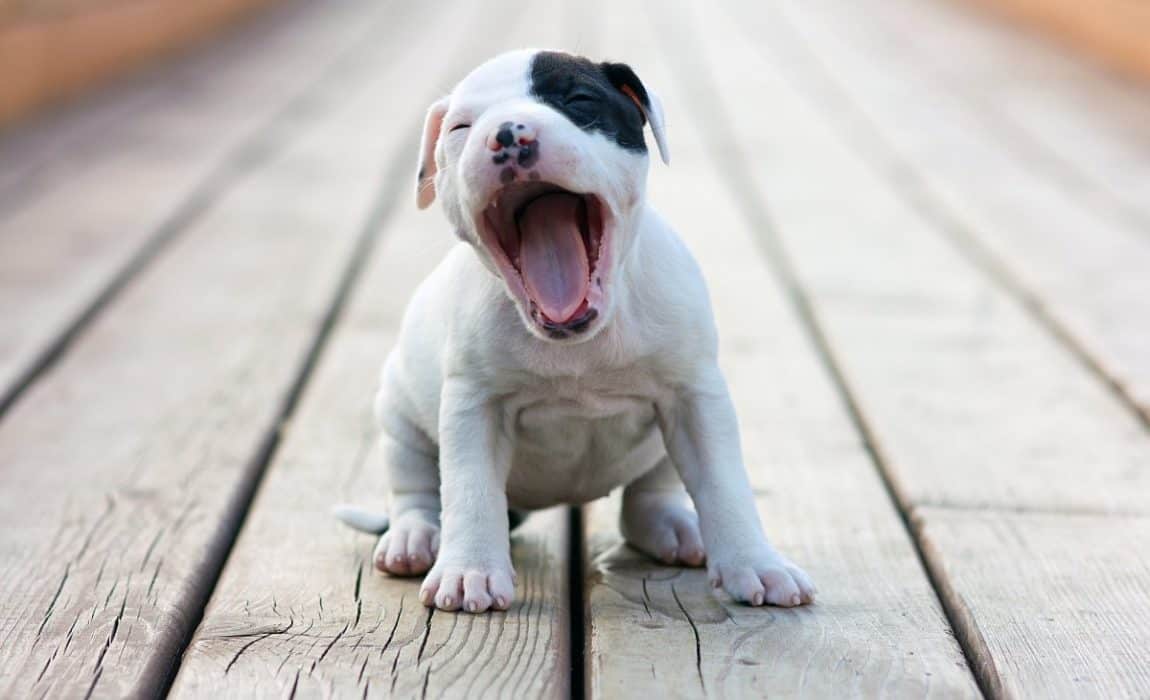

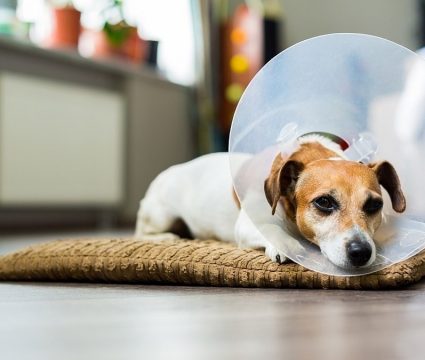
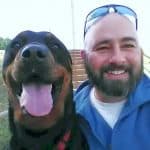



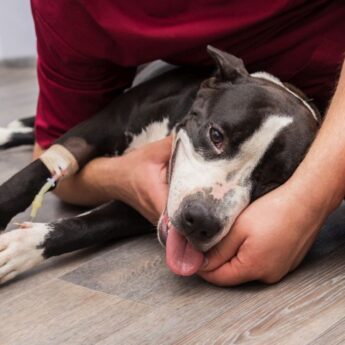
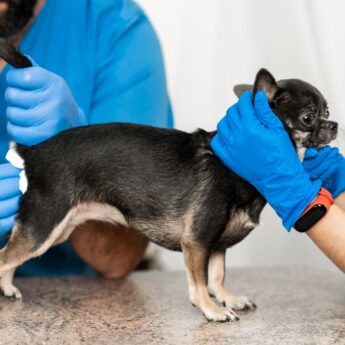
No Comments